Travels through Andalucia
![]()
Granada
Our plan for Granada was to spend two days exploring the city and on the third day, to visit the Alhambra, the legendary hilltop palace and fortress complex. There is a process for visits: prepaid reservations must be made in advance so that the number of visitors can be controlled and limited. Our reservations specified an afternoon entry to the Alhambra and further specified the time when we could enter the Nasrid Palaces, the most sensitive and protected area.
The pension that we had selected by chance sat at the corner of the Plaza del Carmen dominated by the Ayuntamiento (City Hall) so we were very much in the centre of the city!
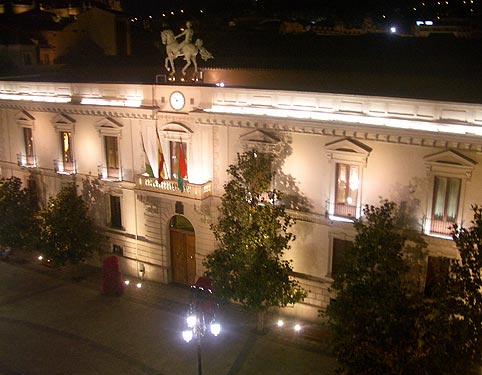
A short walk took us to Plaza Bib Rambla with cafes on all sides with outdoor seating. We picked one for a late lunch. We continued our walk to the Renaissance Cathedral and adjoining Capilla Real, a flamboyant Gothic mausoleum, final resting place of Queen Isabel and King Fernando (below).
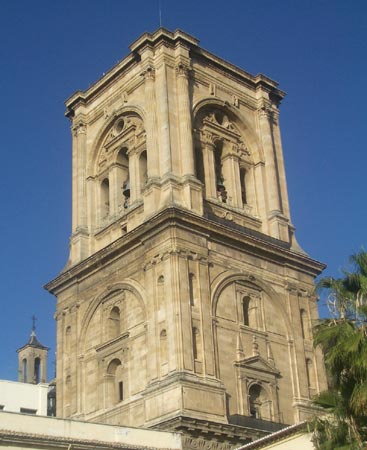
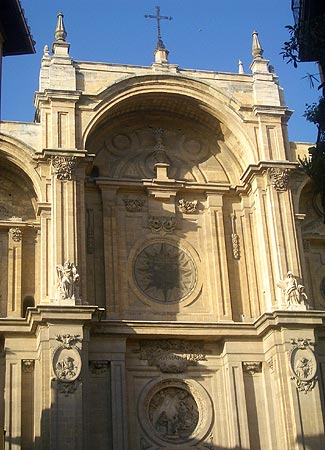
We then found our way into a series of small alleys packed with small stalls selling all manner of bright Moorish arts, crafts and souvenirs (below left). Finally returning to Plaza Bib Rambla for dinner we are pleased to see many people out enjoying the nice evening (below right). Granada in summer is a delightful place!
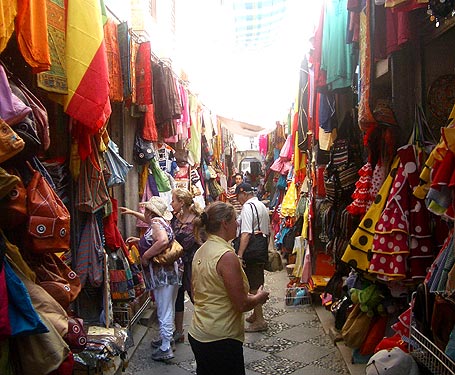
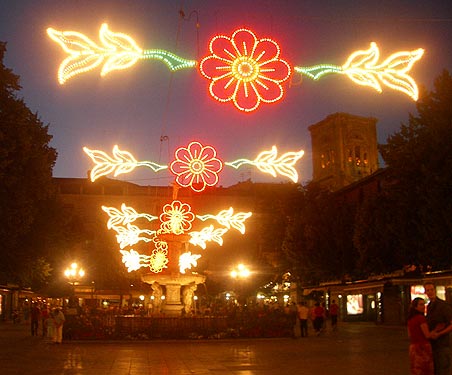
The city sits on the slopes of three hills, the end of the mountains of Sierra Nevada, with the high peaks rising in the distance (below left). The next morning, after delivering our laundry to the lavenderia, we climbed up into the Albaicin, the old Moorish Quarter, a labyrinth of steep narrow streets lined with rowhouses whose doors were often just a step or two up from the cobblestones (below right). The climb was amazingly steep and the stone paving exceedingly bumpy but, surprisingly, cars rumbled through at great frequency!
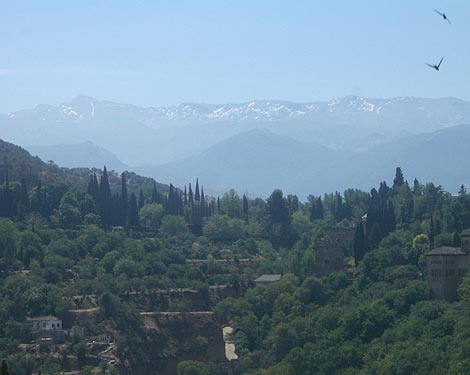

Atop the hill was the Mirador San Nicolas where we viewed the Alhambra on the opposite hilltop (below), an extensive compex of walls, buildings and towers with flags flying, quite graceful. We have created a picture gallery of the Alhambra, which you can view from the links at the bottom of this page.
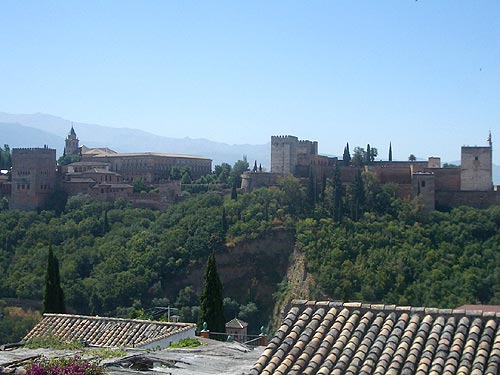

After a stop for drinks and snacks, we walked down a different way to a road along the river that runs between the hills of the Albaicin and Alhambra.
Later, we caught a city bus and rode through the more modern neighborhoods of residential apartments, mostly six stories with shops on the street level. There are some higher rise buildings, as well. It became clear that beyond the historic areas, Granada is a normal city, well kept and orderly, well served by bus transit.
The next morning, we walked to Plaza Nuevo and up a path through lush green forests toward the Alhambra, just to do some recognizance. At the top, people were clustered around the entrance, waiting for their assigned time to enter. We decided that we should allow plenty of time tomorrow!
Exploring the area further, we discovered an old olive grove, the trees bearing tiny olives (below), and the Manuel de Falla Museo and Casa (closed, but we returned the next day).
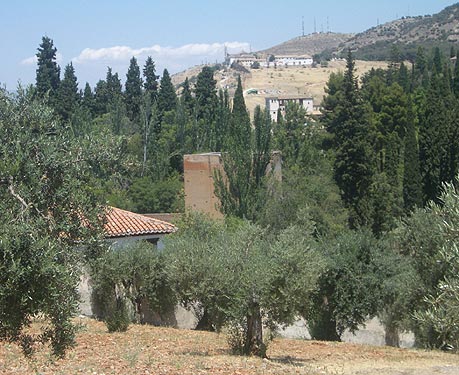

On our Alhambra Day, we first returned to the Museo de Falla to learn about this great Spanish composer.
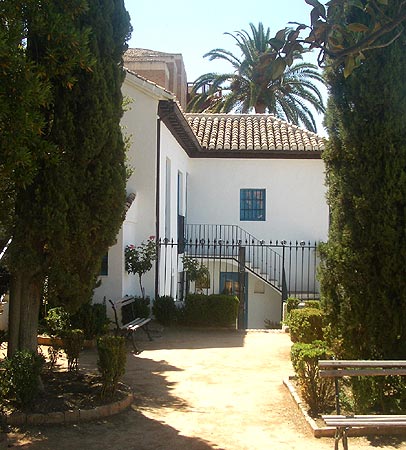
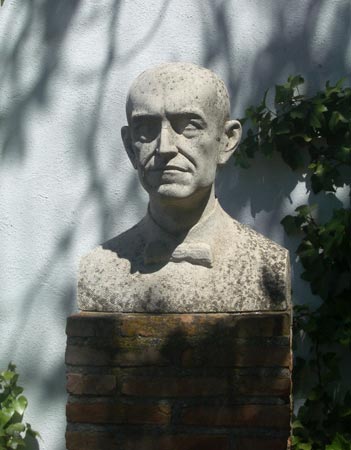
Then we walked up to the Alhambra entrance, collected our tickets and ate a picnic lunch while we waited for our visit time.
The Alhambra
To provide some background, the Alhambra was the palace/fortress of the Nasrid sutans, rulers of the last Spanish Moorish kingdom. During 260 tumultuous years, from 1232 until 1492, the Nasrid sultans retained power and built their palace-homes where Moorish art and architecture reached a stunning climax, according to the inscription at the entrance, "a showpiece of workmanship.... a monument to the Imam Muhammad."
After the fall of the Nasrids to the Christians in 1492, the Alhambra was taken over by Carlos V, who added his own Renaissance palace and modified the Nasrid palaces for the use of his own family and court.
The Alhambra is a visual place beyond our ability to describe so we have created a picture gallery to share our visit with you.
Click here to view it.
Click here to return to Our Travels in Europe - Summer of 2007 page
![]()